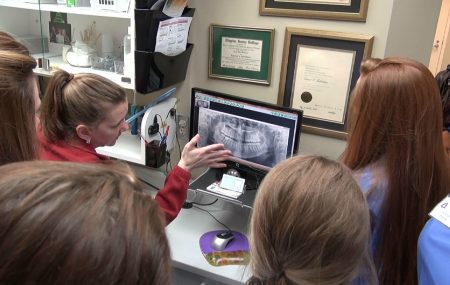
Understanding the Importance of Dental X-Rays and Safety Procedures
Author: Dr. Casey Hart
Dental X-rays are a crucial tool in diagnosing and treating oral health conditions that may not be visible during a routine dental exam. These images help dentists detect cavities, monitor bone health, and identify potential issues before they become severe. However, ensuring safety in the use of dental X-rays is essential to minimize radiation exposure while maximizing their diagnostic benefits.
The Role of Dental X-Rays in Oral Health
Dental X-rays provide valuable insights that contribute to effective treatment plans and improved patient outcomes. Some key uses of dental X-rays include:
-
Detecting cavities and decay in areas that are not visible to the naked eye.
-
Evaluating bone health to assess conditions like periodontal disease or bone loss.
-
Monitoring tooth development in children and assessing the need for orthodontic treatment.
-
Identifying infections or abscesses that may not present immediate symptoms.
Types of Dental X-Rays
Different types of dental X-rays are used based on the diagnostic needs of the patient:
-
Bitewing X-rays – Focus on detecting cavities between teeth.
-
Periapical X-rays – Capture images of the entire tooth, from crown to root.
-
Panoramic X-rays – Provide a full view of the mouth, including teeth, jaw, and surrounding structures.
-
Cone Beam CT Scans – Offer a three-dimensional view for more detailed analysis of bone and tissue structures.
Safety Procedures for Dental X-Rays
While dental X-rays involve exposure to radiation, modern advancements have made them significantly safer. Here are some important safety measures used in dental offices:
-
Use of Lead Aprons and Thyroid Collars: Protective gear helps minimize radiation exposure to other areas of the body.
-
Digital X-rays: Modern digital imaging reduces radiation exposure by up to 90% compared to traditional film X-rays.
-
ALARA Principle (As Low As Reasonably Achievable): Ensures that radiation exposure is kept to the lowest possible levels while obtaining necessary diagnostic images.
-
Routine Equipment Maintenance: Regular calibration and inspection of X-ray machines ensure they function safely and efficiently.
-
Patient-Specific Imaging: X-rays are only taken when necessary, considering the patient’s age, health condition, and history of dental issues.
The Importance of Regular Dental Checkups
Routine dental exams that include X-rays help in early detection and prevention of serious dental issues. By following recommended safety procedures, both patients and dental professionals can benefit from the diagnostic advantages of X-rays without unnecessary risks.
Start Your Career in Dental Assisting with DCI
If you’re interested in learning more about dental X-ray procedures and safety, Dental Careers Institute (DCI) offers comprehensive training programs designed to equip future dental assistants with essential skills. Our hands-on learning approach ensures that students gain confidence in handling X-ray equipment safely and effectively. Visit mydentalcareers.com to learn more about our programs and take the first step toward a rewarding career in dental assisting.
Understanding the importance of dental X-rays and safety procedures ensures that patients receive the best care while minimizing risks. With advancements in technology and strict safety protocols, dental professionals can continue to use X-rays as a powerful diagnostic tool in modern dentistry.
